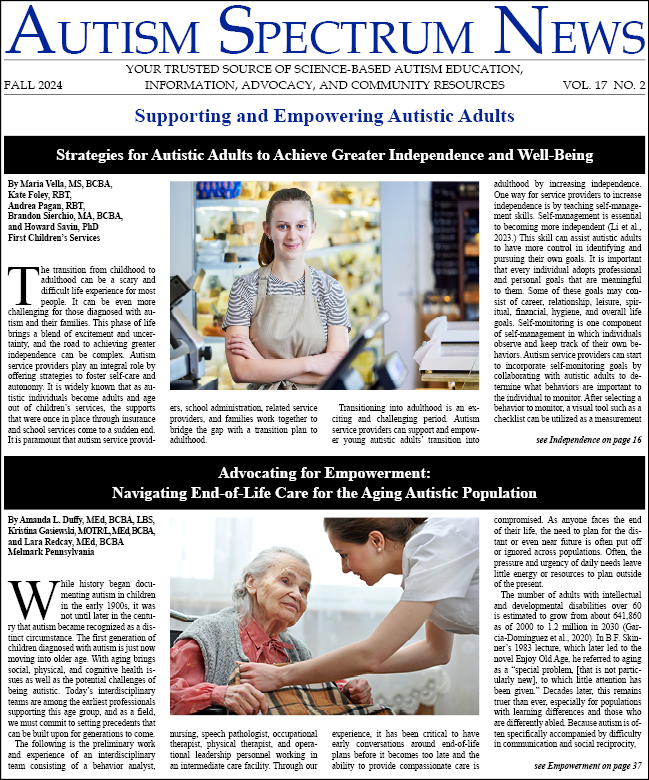-
Autism’s Growing Problem
As kids with autism become teenagers and adults, fewer and fewer services are available to help them and their families In March 2020, my wife and I dropped our teenage son off at a residential school for kids with autism in Boston. It was the day after Purim - just before the world seemed to...
-
The Benefits of Training Parents to Use Antecedent-Behavior-Consequence Charts
Individuals with autism spectrum disorder can exhibit many behaviors their families, teachers, and other supporters in their communities find challenging. Likewise, individuals on the spectrum see the world at large as a challenge, and the people in their lives find the challenging behaviors their...
-
Balancing and Prioritizing Academic and Behavioral Goals in an Inclusive Classroom Setting
Before academics can be made a priority, a child’s behaviors must be addressed to set them up to be successful in an inclusive, general education setting. In an inclusive classroom setting, there are many behavioral demands placed upon a student. Target behaviors must be prioritized in order for...
-
Crisis Management in Children with Autism and First Responders
Children diagnosed with autism spectrum disorder (ASD) are more likely to engage in challenging behavior than their neurotypical peers. Severity of these behaviors range from mild to very severe and include topographies such as aggression, self-injury, destructive behavior, pica, and elopement...
-
Assessment and Treatment of Challenging Behavior Maintained by Social Reinforcers
About 1 in 54 school-age children are diagnosed with autism spectrum disorder (ASD; Maenner et al., 2020). The core symptoms of ASD include impairments in social interaction, difficulties communicating, and restricted and repetitive interests (American Psychiatric Association, 2013). Although not a...
-
Educating First Responders to Improve Encounters with Autistic Individuals
It is estimated there are more than 3.5 million Americans living with autism spectrum disorder (ASD) and the number continues to grow.1 According to CDC statistics, the prevalence of autism has increased from 1 in 150 children born in 2000 to 1 in 54 as of 2020.2 This expanding segment of the...
-
Screening for Anxiety and Depression in the Context of Challenging Behavior
Challenging behavior is common among individuals with autism spectrum disorder (ASD). Challenging behavior includes tantrums, self-injurious behavior, noncompliance, and aggression, especially when they occur with heightened intensity or frequency (Machalicek et al., 2016). In addition, anxiety and...
-
Assisting Caregivers with the De-Escalation of Challenging Behaviors
Throughout my time as a special education teacher and administrator, I have always searched for ways to help my Autism Spectrum Disorder (ASD) students de-escalate themselves without having to get to a point where the use of a protective hold was needed. This was, at times, a herculean feat because...
-
Enhancing Communication to Reduce Challenging Behaviors
The most recent report from the CDC found the prevalence of autism spectrum disorder (ASD) to be one in 54 children in the US (Maenner et al., 2020). Because the diagnostic criteria for ASD includes persistent deficits in communication and deficits in nonverbal communicative behaviors, many...
-
Identifying Why Challenging Behavior Occurs: Tips for Prevention
Children with autism often display higher rates of challenging behaviors, including non-compliance, aggression, self-injurious behavior, and socially inappropriate behavior such as disrobing in public, when compared to typically developing peers (Holden & Gitlesen, 2006). It can be difficult...





